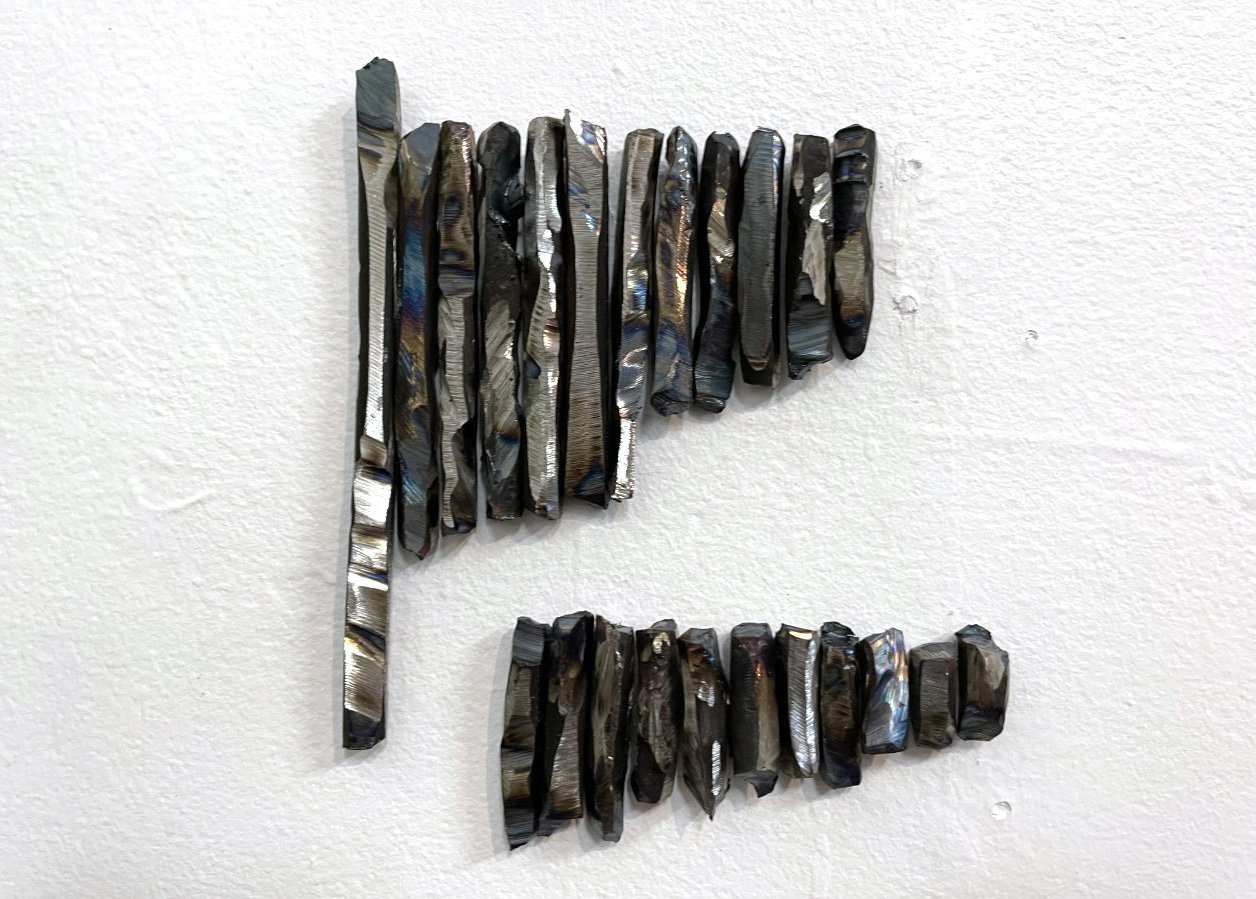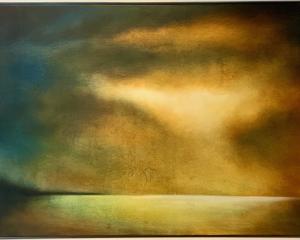By Robyn Maree Pickens

"Totally Dark [Chlorophyll]", Sonya Lacey
(Favour, 418 Princes Street)
‘‘Totally Dark [Chlorophyll]’’ was conceived in relation to Sonya Lacey’s exhibition, ‘‘Totally Dark’’, which is showing concurrently at the Dunedin Public Art Gallery (DPAG).
Both exhibitions explore, and to varying extents manifest, themes of rest, sleep, and errant time within neoliberal labour economies.
If the large-scale immersive film works at DPAG attempt a disengagement from clock-time and potentially induce sensorial disembodiment, the intimate scale of Favour and Lacey’s works, which comprise a handwritten text and small sculptures, can be interpreted and experienced as a counterbalance: offering embodiment and (albeit fugitive) tangibility.
Embodiment can be experienced not only through the physical presence of the handwritten text (Chlorophyll script 2020-2021) or metal sculptures, but by the ways these works interact with the large Monstera deliciosa plants at Favour (also Miss Reid Florist).
Chlorophyll script is a short speculative fiction that documents an interspecies relationship of care between the unnamed protagonist, a second-person interlocutor ("you"), and a bougainvillea plant. The sleep-deprived speaker administers doses of metals (zinc, iron, copper, and magnesium) identified as sleep aides to the plant as well as themselves. Through the act of administering sleep aides to a bougainvillea plant, the protagonist is either anthropomorphising the plant or recognising plant subjectivity and offering speculative remediation.
The metals identified in Chlorophyll script are present in sculptural works such as Iron (Before 6pm), Before 11pm), (Near midnight), 2021, and in the DPAG exhibition. Another material connection is newsprint ink sourced from the Otago Daily Times.

(Olga)
With the exhibition title Immanence, a quotation by philosopher Gilles Deleuze on the gallery wall, and an accompanying catalogue essay discussing Neil Lowe’s work in relation to Deleuze’s philosophical thinking, it becomes difficult to avoid considering the eight sculptural works in this exhibition via any other framework.
Perhaps the only disadvantage of such an approach is that it risks overdetermining the relationship between philosophical discourse and the artworks in question.
Although divergent and directed towards different canons, philosophical and theological definitions of immanence loosely cohere around the idea of being contained within and the state of being present.
Deleuze developed the "plane of immanence" which sought to deny even the existence of transcendence (the opposite of immanence). In the most abbreviated description, the plane (of immanence) can be figured as a geometric space, the plane is often smooth, it supports existence within and upon, and deploys the concept of "folds" to theorise relationships.
The foundational shape and function of Lowe’s sculptural works is a plane that contains geometric shards of the same material but painted or sprayed in a variety of colours. The plane’s perforated edges are folded to house the fragments, although some edges are sharp, project outwards, and threaten to release their inhabitants.
Each work corresponds with eight of Sergei Lyapunov’s 12 Transcendental Etudes (1897-1905) which can be listened to via a QR code, and each was constructed using algorithmic generators.
Whether generators can express emotion (e.g. migration) is one concern Lowe’s work performs.

(RDS)
There is something challenging and anachronistic about a young person, artist Esther Bosshard, painting gestural land and seascape oil paintings in 2021. To do so without apparent irony suggests a quietly wilful, if not radical courage.
The paintings evoke a fantastic sense of rhythm and movement, so perhaps an intention might be to convey the animacy or aliveness of nature. This is evident in the force of energy rippling long grass or grain crops or in a leaden blue-black sky falling into the ocean.
The location of fields, beaches, and littoral ecologies are only occasionally specific and, as the catalogue confirms, this enables viewers to form their own connections via association or memory. Perhaps the intention of such accessibility is itself an offering.
Landscape - as a term and a genre of painting - is rarely neutral, however. Historically a record of property ownership and wealth landscape painting is vexing from the perspective of class and wealth distribution. In the context of settler societies such as Aotearoa, most, if not all of the named scapes were not acquired justly or legally.
If Rona from the Maori story "Rona and the Moon" is evoked, as she is in the exhibition title, perhaps Bosshard is signalling another interpretation, but if so, it is oblique.
While these paintings are aesthetically beautiful and their thick impasto materiality impressive, their challenge lies in considering what an historical subject matter and technique offer contemporary issues of class, colonisation, and climate emergency.












